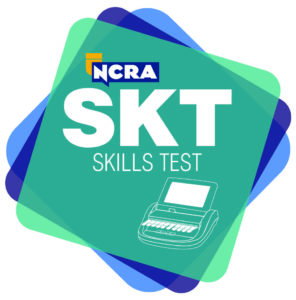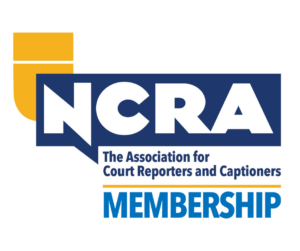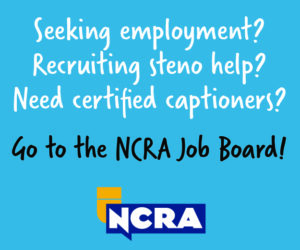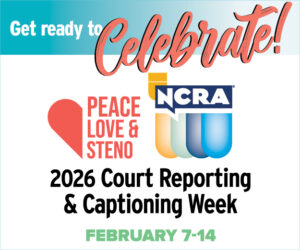|
JARGON ALERT CART: Communication Access Realtime Translation CAT: computer-aided transcription IPRS: Intersteno Parliamentary and other professional Reporters’ Section STTR: speech-to-text reporter |
Never did I imagine as a young court reporter that this profession would lead me to travel the world. I didn’t even know such possibilities existed as I was striving for that last 225 wpm Q&A test in court reporting school. As a reporter now for 20 years, I’m excited to see where this profession will take me in the decades to come.
I am a court reporter, CART provider, and captioner. I’ve done everything from daily copy trials to captioning onsite for large conferences. But in February, I had a new opportunity: I was given the chance to share this profession with others around the world. Those “others” were potential STTR reporters in the Czech Republic. STTR stands for speech-to-text reporter. It is the same as what we call CART here in the United States.
I was blessed with this opportunity by my good friend and colleague Karen Yates. She met some individuals at the IPRS (InterSteno) meeting in Prague last September. These individuals were from Masaryk University in Brno, Czech Republic, and they were putting together the Universal Learning Design conference in February 2013. The request was for me to speak twice: once to prospective STTR reporters and again during the conference at large.
Upon being asked to give a presentation, I said yes, not even knowing where Brno was. It was going to be quite the journey to get there. I flew from Phoenix to Dulles to Frankfurt to Vienna, took a cab to the train station, and then had a two hour train ride to Brno. After planes, trains, and automobiles, I arrived and was ready to meet some new friends.
This conference was very accessible be cause the modes of communication were limitless: translation from English to Czech and vice versa; interpreters in Czech Sign Language as well as International Sign Language; and CART in both English and Czech. I purposely slowed my speech down because there is nothing more annoying than a fast-talking presenter, right?
Not only did I get to talk about how the steno machine works, how we do our jobs, and how we serve so many deaf and hardof- hearing individuals in the United States, but I also was able to learn how it is done in the Czech Republic, the Netherlands, and Ireland.
In the Czech Republic, CART requests are increasing, and Masaryk University is looking for ways to expand the number of STTR reporters on staff. Currently, the STTR reporters use QWERTY keyboards to type the text. Masaryk University has developed a system to allow deaf and hardof- hearing students to view CART text on an iPad in a classroom. This system only works with the STTRs in the classroom and does not allow for remote services.
The Teiresias Center, the support center for students with disabilities at Masaryk University, is interested in creating a bachelor’s degree program for STTR reporters. At present, the STTRs are students who attend the university but who have had no formal training in providing such a service.
Within the country, however, remote services are provided for individuals at certain governmental offices. The remote CART services do not need to be prearranged. There are STTRs on call during business hours. The STTR will receive a notification via the computer that someone needs services, and everyone gets online immediately to accommodate the request.
In Ireland, the method is similar to the way it’s done here in the United States. They use steno machines and the same CAT software. Services are expanding there as well, and the need for CART providers is growing. There are members of NCRA in Ireland. Don’t think for a second that we are limited by the East and West Coasts of our country. Our certifications reach across the pond as well!
In the Netherlands, most CART providers use a veyboard or a Velotype machine. On a Velotype machine, writers can type up to 1,200 characters per minute. How that translates to words per minute, I don’t know. When using a Velotype, it is an all-in-one kind of keyboard. You can plug into any computer and be off and running. Everything you need is in the keyboard itself. This is a very interesting concept. Also, in the Netherlands, the consumer gets to choose his or her CART provider, not the paying entity. I liked this model of acquiring services.
In listening to all of the presentations, my take-away point was that while the methodology of how we provide text to the consumer may be different, we encounter many of the same issues. No matter where you are in the world, CART services are needed. Firm owners want qualified writers who have had training in providing such services so they can hit the ground running with job assignments. For me, I discover something new every day in this profession, so it is a constant state of learning.
This visit to Eastern Europe was another way for me to see the world and experience a new culture, language, and currency. This opportunity was presented to me because I am a court reporter, CART provider, and captioner. While I didn’t work at this conference by writing, I had my steno machine in tow. It’s rare that I am not carrying my equipment with me, regardless of where I am in the world. I don’t pack a light suitcase, but I have gotten my steno briefcase down to a science so it easily fits in any overhead bin, even on small jets.
I heard about many American reporters who work in Europe doing CART as well as court reporting. If you want to get involved, I can’t say this enough: Network, network, network. Get involved with NCRA, Intersteno, and other organizations. Promote your skills and certifications. Keep your eyes, ears, and mind open to where this profession will take you.









